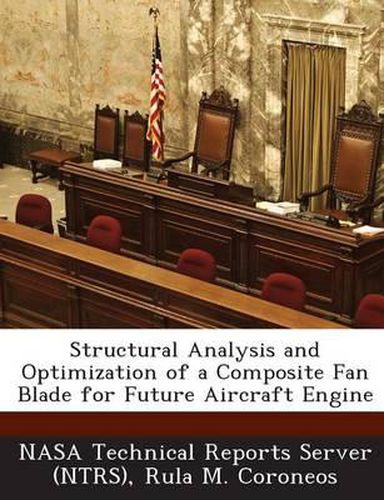Readings Newsletter
Become a Readings Member to make your shopping experience even easier.
Sign in or sign up for free!
You’re not far away from qualifying for FREE standard shipping within Australia
You’ve qualified for FREE standard shipping within Australia
The cart is loading…






This report addresses the structural analysis and optimization of a composite fan blade sized for a large aircraft engine. An existing baseline solid metallic fan blade was used as a starting point to develop a hybrid honeycomb sandwich construction with a polymer matrix composite face sheet and honeycomb aluminum core replacing the original baseline solid metallic fan model made of titanium. The focus of this work is to design the sandwich composite blade with the optimum number of plies for the face sheet that will withstand the combined pressure and centrifugal loads while the constraints are satisfied and the baseline aerodynamic and geometric parameters are maintained. To satisfy the requirements, a sandwich construction for the blade is proposed with composite face sheets and a weak core made of honeycomb aluminum material. For aerodynamic considerations, the thickness of the core is optimized whereas the overall blade thickness is held fixed so as to not alter the original airfoil geometry. Weight is taken as the objective function to be minimized by varying the core thickness of the blade within specified upper and lower bounds. Constraints are imposed on radial displacement limitations and ply failure strength. From the optimum design, the minimum number of plies, which will not fail, is back-calculated. The ply lay-up of the blade is adjusted from the calculated number of plies and final structural analysis is performed. Analyses were carried out by utilizing the OpenMDAO Framework, developed at NASA Glenn Research Center combining optimization with structural assessment.
$9.00 standard shipping within Australia
FREE standard shipping within Australia for orders over $100.00
Express & International shipping calculated at checkout
This report addresses the structural analysis and optimization of a composite fan blade sized for a large aircraft engine. An existing baseline solid metallic fan blade was used as a starting point to develop a hybrid honeycomb sandwich construction with a polymer matrix composite face sheet and honeycomb aluminum core replacing the original baseline solid metallic fan model made of titanium. The focus of this work is to design the sandwich composite blade with the optimum number of plies for the face sheet that will withstand the combined pressure and centrifugal loads while the constraints are satisfied and the baseline aerodynamic and geometric parameters are maintained. To satisfy the requirements, a sandwich construction for the blade is proposed with composite face sheets and a weak core made of honeycomb aluminum material. For aerodynamic considerations, the thickness of the core is optimized whereas the overall blade thickness is held fixed so as to not alter the original airfoil geometry. Weight is taken as the objective function to be minimized by varying the core thickness of the blade within specified upper and lower bounds. Constraints are imposed on radial displacement limitations and ply failure strength. From the optimum design, the minimum number of plies, which will not fail, is back-calculated. The ply lay-up of the blade is adjusted from the calculated number of plies and final structural analysis is performed. Analyses were carried out by utilizing the OpenMDAO Framework, developed at NASA Glenn Research Center combining optimization with structural assessment.